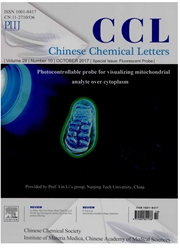

 中文摘要:
中文摘要:
因为它在制作的应用预付功能的 nanomaterials 的潜力,与终端炔属羟在表面上构造低维的 nanostructures 的自底向上的途径拉了大兴趣。完成的产品的差异表明终端炔属羟和因此小心的连接策略和合适的控制方法论的富有的化学为高质量的目标 nanoarchitectures 的选择准备被要求。这评论总结为终端炔属羟连接策略的各种各样的在表面上,包括非结合的相互作用象一样有机金属并且共有原子价结合,并且举例子由先锋结构,底层和激活模式的变化显示出表面集会的有效控制和终端炔属羟的反应。终端炔属羟的在表面上连接的系统的研究可以帮助表面 nanomaterials 的有效、可预言的准备和表面化学的进一步的理解。
 英文摘要:
英文摘要:
Bottom-up approach to constructing low-dimensional nanostructures on surfaces with terminal alkynes has drawn great interest because of its potential applications in fabricating advanced functional nanomaterials. The diversity of the achieved products manifests rich chemistry of terminal alkynes and hence careful linking strategies and proper controlling methodologies are required for selective preparations of high-quality target nanoarchitectures. This review summarizes various on-surface linking strategies for terminal alkynes, including non-bonding interactions as well as organometallic and covalent bonds, and presents examples to show effective control of surface assemblies and reactions of terminal alkynes by variations of the precursor structures, substrates and activation modes. Systematic studies of the on-surface linkage of terminal alkynes may help efficient and predictable preparations of surface nanomaterials and further understanding of surface chemistry.
 同期刊论文项目
同期刊论文项目
 同项目期刊论文
同项目期刊论文
 期刊信息
期刊信息
